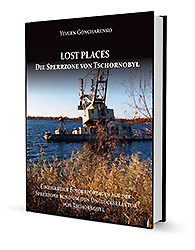 December 26, 2011. Around 12 a.m. we come back from Iitate to Minamisoma and go to the local city hall, to meet with the Minamisoma decontamination project director Tokio Hayama.
December 26, 2011. Around 12 a.m. we come back from Iitate to Minamisoma and go to the local city hall, to meet with the Minamisoma decontamination project director Tokio Hayama.
Near the city hall a large fixed dosimeter drew my attention. Gamma background at the entrance to the city hall – 0.31 μSv/h.
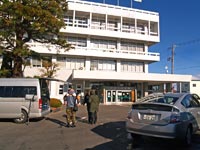 |
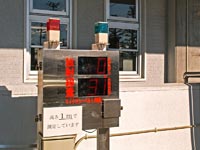 |
 |
There are a lot of people in the city hall, near the entrance the lists of dead and missing in the tsunami, and many thousands origami cranes...
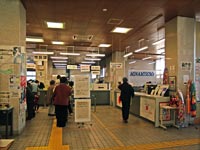 |
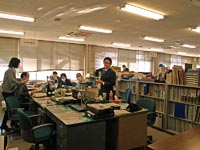 |
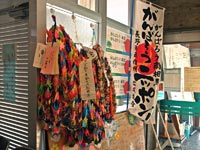 |
Decontamination department of Minamisoma occupies a small room. Head of the department Tokio Hayama, as it befits a Japanese official – restrained and laconic. The department just recently received from the Ministry of the Environment a workbook about the decontamination and radioactive waste temporary localization sites organization. The department is studying it, sends to local administrations and coordinates the work of local teams of volunteers who make area decontamination.
Looking at Tokio Hayama and all employees of the department one can see that they are working at the limit (although the Japanese can’t work in other way). Phones in the office keep ringing, and all the free space of a small room cluttered with boxes of PPE (personal protective equipment) and high-pressure mini cleaners.
– I believe that sooner or later you will clean your Minamisoma from radioactive dirt, – I said at parting.
– I also believe in this, but we have plenty of work ahead, – tiredly smiles Tokio Hayama.
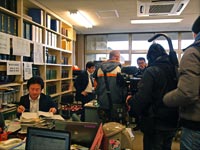 |
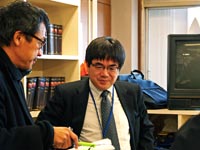 |
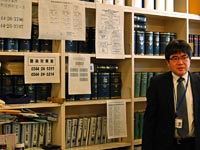 |
Our next goal – a kindergarten “Yotsuba Nursery School”.
Kindergarten “Yotsuba” (よつば保育園)
After the accident at the Fukushima Daiichi Nuclear Power Plant and the evacuation of Minamisoma residents, the kindergarten was closed. By late summer, some residents have returned. Some returned with their children and kindergarten had to open again. But before that, on August 18, by means of the kindergarten employees and parents of children decontamination of the area was carried out. The building was washed, all the trees and bushes in the yard were cut down and the top layer of soil was removed.
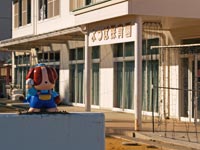 |
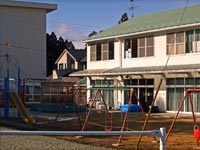 |
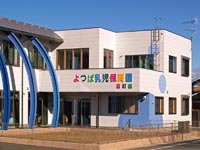 |
Near the entrance to the kindergarten for us have been waiting its headmaster Yoshiyuki Kondo (近藤ヨシユキ). Near him a group of “rock'n'roll look” guys. This is the band of Higashida Tomohiro(東田トモヒ) from Kyushu (九州). They were not afraid of radiation, and drove a half of Japan to meet with children of Minamisoma, to sing their songs for them and bring toys, fruits and clothes.
In the courtyard of a kindergarten is clean indeed. On my search dosimeter MKS-11 “Spectra” – 0.15 μSv/h (for all the days of our trip in Fukushima I had to wean from such low levels of gamma background). Stora-TU, in the mode of measuring the beta flux density, hardly captures the individual decays.
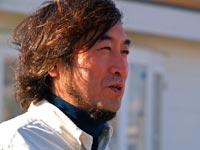 |
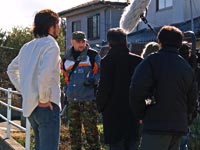 |
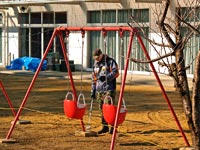 |
But if only I approach the fence of the kindergarten and gamma background level begins to rise rapidly to 1.5 μSv/h. Outside the garden in some places there are some spots up to 3 μSv/h.
– You did a good and necessary work, cleaned the kindergarten, but in fact all around is left as it was. Wind can easily lift the radioactive dust back into your yard.
Yoshiyuki Kondo nods sadly.
– I understand this very well, but not everyone has the opportunity to leave, and till in Minamisoma there are children, we will continue working. I know about the levels of radioactive contamination around our garden, but it is private property and to start its decontamination, we must obtain permission from the owners, and they were evacuated, so finding them is not yet possible.
 |
 |
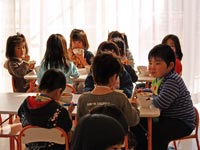 |
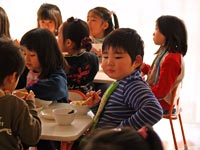 |
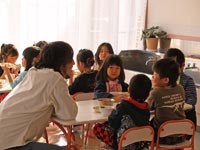 |
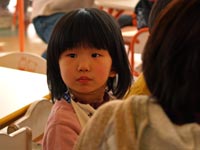 |
In the kindergarten there is a stand with photographs. On each people holding hands, and the extremes stretching out their hands so that it seemed that they also hold someone's hand. If you put all the pictures in a row, you will get a chain of different people holding hands. There are a lot of such photos there. All made in 2011. At parting we also made such photo.
The next and last our goal in Minamisoma – a temporary village for evacuees on the outskirts of the city.
The interim settlement “Chikura”. Kashima. Minamisoma.
The village is situated on the outskirts of Minamisoma in the middle of the field. When in May 2011 began the construction of this settlement, builders filled with rubble and covered with asphalt its entire territory. Because of this, today this is one of the cleanest places in Minamisoma. The level of gamma background in the village is about 0.16 μSv/h, in the fields around it – 0.6 μSv/h.
According to Kenzo Hashimoto, in the village are living some 10,000 people evacuated from the zone of obligatory resettlement.
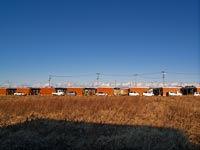 |
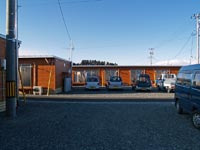 |
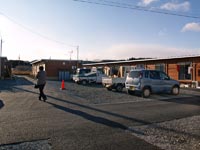 |
One of the local inhabitants Shinichiro Raku invited us to come to visit him. Flats, “units” as they are sometimes called here, though look pretty unattractive outwardly, inside are quite comfortable. There are two rooms, kitchen, bathroom with toilet and a complete set of necessary home appliances. But still the residents of “Chikura” scolded the government and TEPCO, and ask when they can go home...
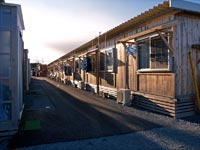 |
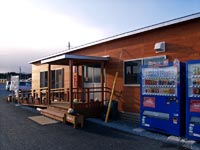 |
 |
“Chikura” is also interesting as almost the only such settlement in which there is a “quarter”, where people can keep pets. At first the government is strictly prohibited to settle in these villages with pets, for fear of complaints about barking dogs and allergic to hair. But residents insisted and took their dogs and cats from the evacuated area. The authorities had no choice as to allocate to them a separate quarter.
 |
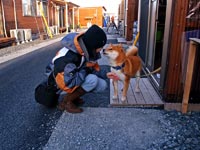 |
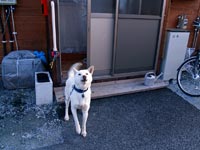 |
Our trip to Fukushima Prefecture came to an end. We are returning to Tokyo. I slept the whole way back and woke up when our van drove up to the hotel in the district Kabuki (歌舞伎町). Outside the car window electric signs flickers with motley lights, crowds of people and lots of cars. The endless bustle of the city of many millions. And I can’t even believe that just this morning I walked with dosimeters on radioactive contaminated, deserted village of Iitate... Now on my dosimeter – 0.11 μSv/h, clear.
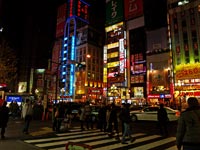 |
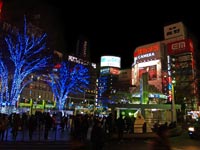 |
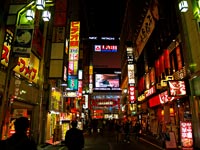 |
| 11.12.2012. Chornobyl. Blackout < Prev | Next >Iitate (飯舘村). Fukushima Prefecture. Day Five |
|---|








